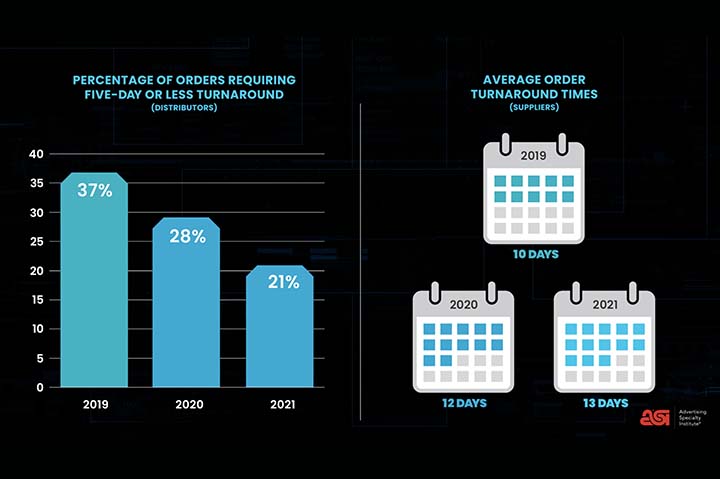Commentary September 02, 2022
Buyers Won’t Settle Forever for Slow Turnaround Times
Rush orders have declined the last two years, but buyers will fall into old habits once the supply chain gets untangled.
About a month ago I bought a couple of books for an upcoming vacation. One of the books (not commonly obtainable) was available on Amazon Prime for a few dollars extra or elsewhere for cheaper. I bought it on Amazon.
My reasoning was simple. It was three weeks before my trip. Under normal circumstances, the standard shipping window of five to eight days still meant it would arrive in plenty of time. But I wanted the certainty and knowledge that it would arrive as quick as possible – next day. So, I paid extra to get it through Prime.
My story is not a unique one. As recently as April 2021, Amazon had more than 200 million Prime members worldwide, according to a letter from Jeff Bezos. (More recent figures aren’t available, though that number has surely increased.) While there are tons of Prime benefits, the major incentive for our family is the free two-day shipping. And we’re not alone in that sentiment. A 2018 survey from The Diffusion Group (I know, not the most recent, but stick with me) found that 79% of Prime members said the free shipping was the number-one reason they subscribe to the service.
Where am I going with this? Well, in our State of the Industry report that released earlier this summer, our exclusive research found that just 21% of orders in 2021 required five days or less turnaround. It’s the second consecutive year the figure dropped, from 28% in 2020 and 37% in 2019. In addition, suppliers reported that their average promotional products turnaround times went from 10 days in 2019 to 13 days in 2021.

We all know the reasons this is occurring. Supply chain issues and lack of inventory have made it very difficult for buyers to get the products they want quickly. We here at ASI Media have covered the topic very thoroughly the past two years, and encouraged distributors to educate their buyers and be transparent about why it’s so difficult to fulfill orders. The subject has certainly garnered more than its fair share of mainstream media coverage, and consumers have been confronted by the supply chain issues everywhere – the grocery store, the hardware store, the car dealer and countless other places.
Bottom line: Buyers know all about the difficulties in getting products. And as our data shows, they’re placing their orders further in advance to compensate.
This should be a positive sign, right? Orders placed earlier benefit everyone. It creates the opportunity for deeper creative ideation. It opens up the possibility of custom production or flourishes. It allows the order process – already fraught with dozens of touchpoints and back-and-forth communication – to breathe. And it mitigates against errors by supplier and distributor workers who might otherwise press to make a deadline. “People were abusing rush services just to get a tote bag quickly,” said Sarah Whitaker, owner and client success manager at Williams Advertising (asi/360402), in our SOI coverage this summer about the rise in order errors and delays. “Is it really a great idea to think of the item Monday and get it by Friday? It should be more thoughtful.”
So, we’re entering a golden era of longer lead times and extra breathing room for our industry, right?
Here’s the problem: I don’t expect it to last. We live in an Amazon Prime world. Patience is still fleeting, especially when everything is on demand. Yes, buyers have accepted right now that it’s going to take longer for the things they want. But at some point, the supply chain is going to untangle itself. Even if the frailties of the “just in time” supply chain have been exposed, the current pain points – astronomical shipping costs, massive port backlogs, lack of workers – are going to ease. And when they do, products will become more readily available.
Are suppliers going to collude and artificially lengthen turnaround times? Of course not. In fact, suppliers are already reporting better inventory positions, more robust staffing and a snapping back of fulfillment times. Naturally, the supplier who delivers the fastest (and most consistently) is going to win distributor business. And we’ll be right back in the rush order arms race that took place over the last 20 years.
I still wholeheartedly endorse talking to your clients to get out ahead of orders. Rush should be a break glass in case of emergency, and not a repeat habit. Still, buyers want speed and convenience. They’re settling for now because they simply don’t have other options. They won’t settle forever.

